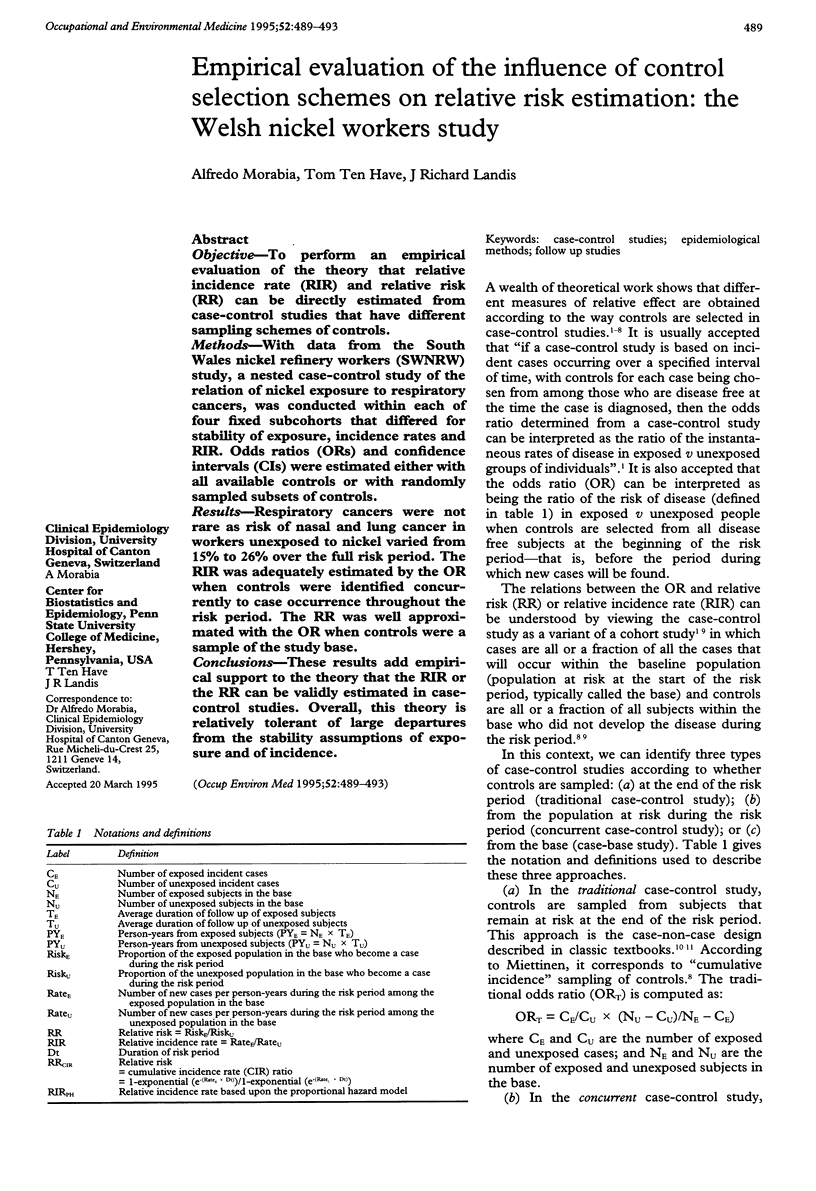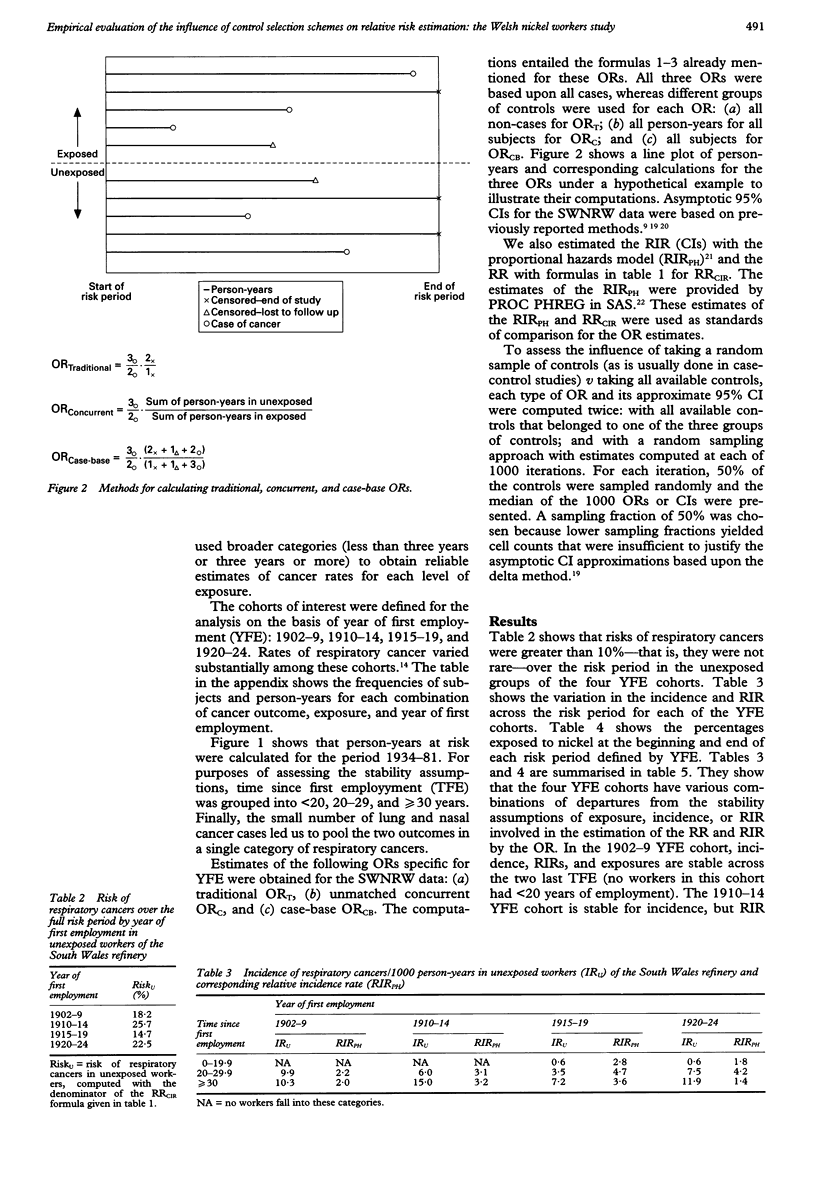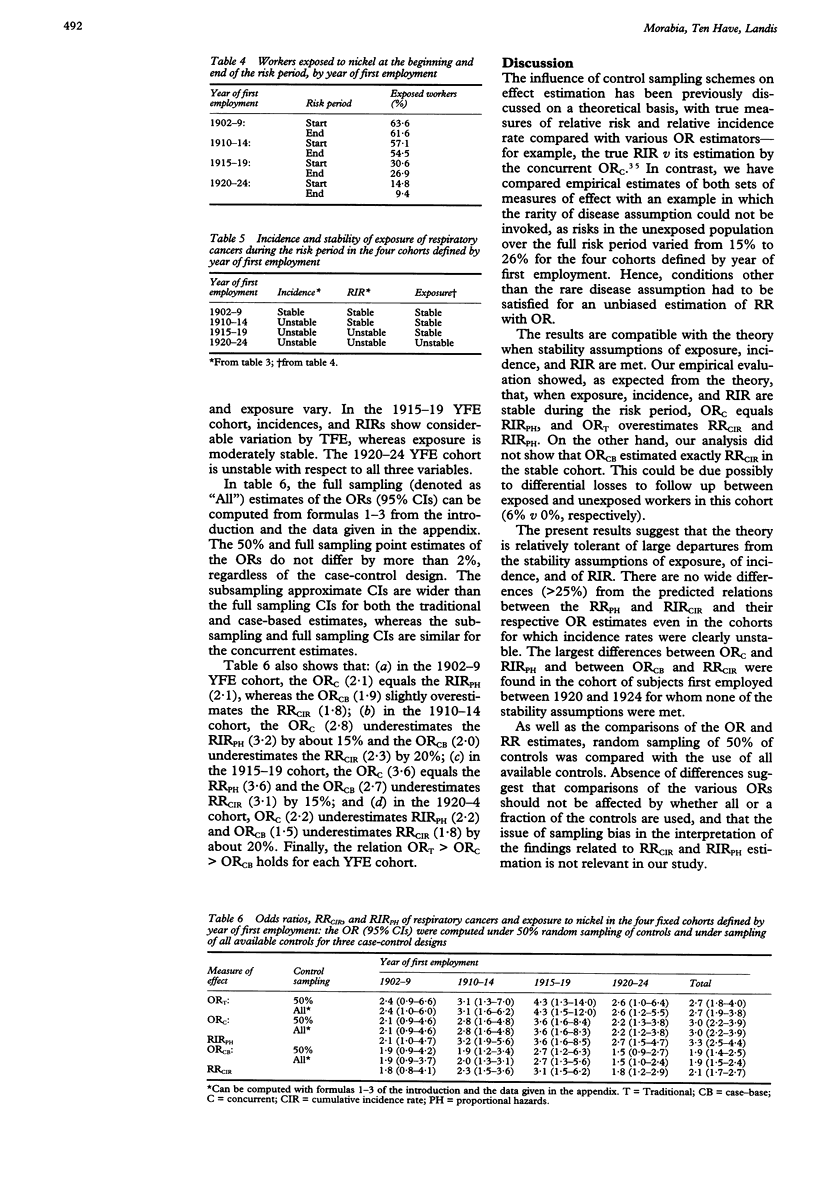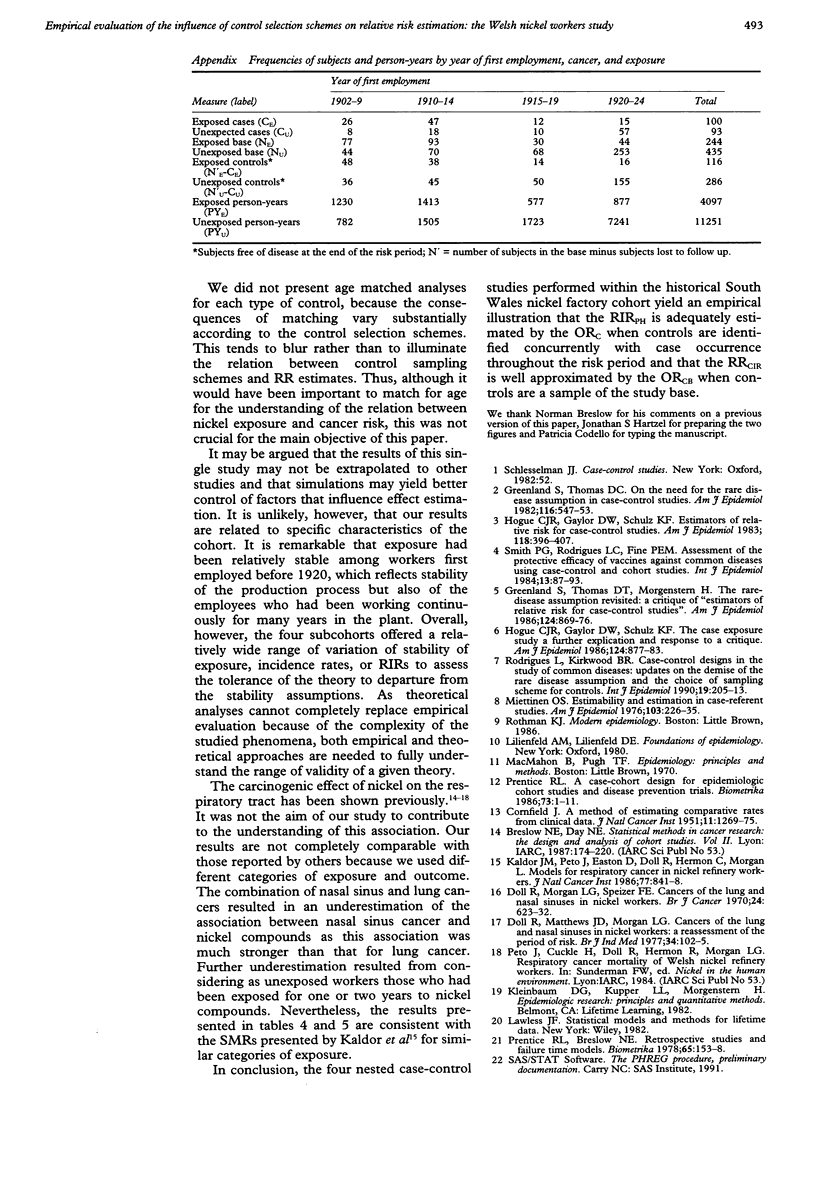Abstract
OBJECTIVE--To perform an empirical evaluation of the theory that relative incidence rate (RIR) and relative risk (RR) can be directly estimated from case-control studies that have different sampling schemes of controls. METHODS--With data from the South Wales nickel refinery workers (SWNRW) study, a nested case-control study of the relation of nickel exposure to respiratory cancers, was conducted within each of four fixed subcohorts that differed for stability of exposure, incidence rates and RIR. Odds ratios (ORs) and confidence intervals (CIs) were estimated either with all available controls or with randomly sampled subsets of controls. RESULTS--Respiratory cancers were not rare as risk of nasal and lung cancer in workers unexposed to nickel varied from 15% to 26% over the full risk period. The RIR was adequately estimated by the OR when controls were identified concurrently to case occurrence throughout the risk period. The RR was well approximated with the OR when controls were a sample of the study base. CONCLUSIONS--These results add empirical support to the theory that the RIR or the RR can be validly estimated in case-control studies. Overall, this theory is relatively tolerant of large departures from the stability assumptions of exposure and of incidence.
Full text
PDF




Selected References
These references are in PubMed. This may not be the complete list of references from this article.
- CORNFIELD J. A method of estimating comparative rates from clinical data; applications to cancer of the lung, breast, and cervix. J Natl Cancer Inst. 1951 Jun;11(6):1269–1275. [PubMed] [Google Scholar]
- Doll R., Mathews J. D., Morgan L. G. Cancers of the lung and nasal sinuses in nickel workers: a reassessment of the period of risk. Br J Ind Med. 1977 May;34(2):102–105. doi: 10.1136/oem.34.2.102. [DOI] [PMC free article] [PubMed] [Google Scholar]
- Doll R., Morgan L. G., Speizer F. E. Cancers of the lung and nasal sinuses in nickel workers. Br J Cancer. 1970 Dec;24(4):623–632. doi: 10.1038/bjc.1970.76. [DOI] [PMC free article] [PubMed] [Google Scholar]
- Greenland S., Thomas D. C., Morgenstern H. The rare-disease assumption revisited. A critique of "estimators of relative risk for case-control studies". Am J Epidemiol. 1986 Dec;124(6):869–883. doi: 10.1093/oxfordjournals.aje.a114476. [DOI] [PubMed] [Google Scholar]
- Greenland S., Thomas D. C. On the need for the rare disease assumption in case-control studies. Am J Epidemiol. 1982 Sep;116(3):547–553. doi: 10.1093/oxfordjournals.aje.a113439. [DOI] [PubMed] [Google Scholar]
- Hogue C. J., Gaylor D. W., Schulz K. F. Estimators of relative risk for case-control studies. Am J Epidemiol. 1983 Sep;118(3):396–407. doi: 10.1093/oxfordjournals.aje.a113646. [DOI] [PubMed] [Google Scholar]
- Kaldor J., Peto J., Easton D., Doll R., Hermon C., Morgan L. Models for respiratory cancer in nickel refinery workers. J Natl Cancer Inst. 1986 Oct;77(4):841–848. [PubMed] [Google Scholar]
- Miettinen O. Estimability and estimation in case-referent studies. Am J Epidemiol. 1976 Feb;103(2):226–235. doi: 10.1093/oxfordjournals.aje.a112220. [DOI] [PubMed] [Google Scholar]
- Rodrigues L., Kirkwood B. R. Case-control designs in the study of common diseases: updates on the demise of the rare disease assumption and the choice of sampling scheme for controls. Int J Epidemiol. 1990 Mar;19(1):205–213. doi: 10.1093/ije/19.1.205. [DOI] [PubMed] [Google Scholar]
- Smith P. G., Rodrigues L. C., Fine P. E. Assessment of the protective efficacy of vaccines against common diseases using case-control and cohort studies. Int J Epidemiol. 1984 Mar;13(1):87–93. doi: 10.1093/ije/13.1.87. [DOI] [PubMed] [Google Scholar]


